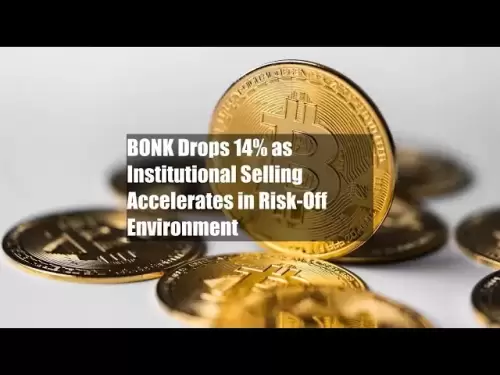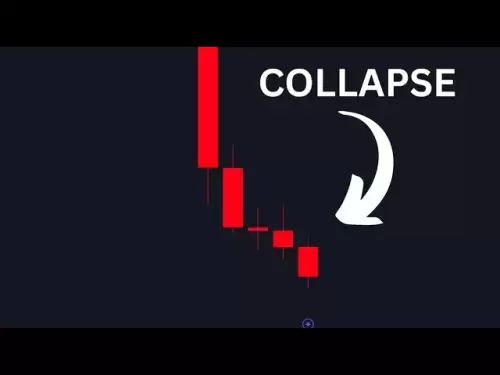-
 Bitcoin
Bitcoin $113900
-1.39% -
 Ethereum
Ethereum $3517
-4.15% -
 XRP
XRP $3.009
1.59% -
 Tether USDt
Tether USDt $0.9997
-0.04% -
 BNB
BNB $766.8
-1.41% -
 Solana
Solana $164.6
-2.38% -
 USDC
USDC $0.9998
-0.02% -
 TRON
TRON $0.3277
0.65% -
 Dogecoin
Dogecoin $0.2023
-1.67% -
 Cardano
Cardano $0.7246
0.05% -
 Hyperliquid
Hyperliquid $38.27
-4.77% -
 Sui
Sui $3.528
-0.52% -
 Stellar
Stellar $0.3890
-0.73% -
 Chainlink
Chainlink $16.16
-2.69% -
 Bitcoin Cash
Bitcoin Cash $539.9
-4.38% -
 Hedera
Hedera $0.2425
-2.00% -
 Avalanche
Avalanche $21.71
-0.97% -
 Toncoin
Toncoin $3.662
5.73% -
 Ethena USDe
Ethena USDe $1.000
-0.02% -
 UNUS SED LEO
UNUS SED LEO $8.964
0.35% -
 Litecoin
Litecoin $107.7
2.33% -
 Shiba Inu
Shiba Inu $0.00001223
-0.40% -
 Polkadot
Polkadot $3.617
-0.97% -
 Uniswap
Uniswap $9.052
-2.49% -
 Monero
Monero $295.1
-3.79% -
 Dai
Dai $0.9999
0.00% -
 Bitget Token
Bitget Token $4.315
-1.85% -
 Pepe
Pepe $0.00001060
0.11% -
 Cronos
Cronos $0.1342
-2.72% -
 Aave
Aave $256.0
-0.87%
What is the liquidation time of Bitcoin ETF?
The liquidation time of a Bitcoin ETF varies based on redemption requests, market liquidity, ETF size, and regulatory compliance, with no fixed timeframe.
Mar 27, 2025 at 11:14 pm

What is the Liquidation Time of a Bitcoin ETF?
Understanding Bitcoin ETF Liquidation
The question of Bitcoin ETF liquidation time doesn't have a single, straightforward answer. Unlike a traditional ETF holding stocks, a Bitcoin ETF's liquidation process is dependent on several factors, primarily the specifics of the ETF's prospectus and the market conditions at the time of liquidation. There's no pre-defined, universally applicable timeframe.
The liquidation process would involve the ETF manager selling its Bitcoin holdings to meet redemption requests from investors. The speed of this process hinges on several crucial elements. Firstly, the volume of redemption requests significantly impacts the time needed to offload the Bitcoin holdings. A large influx of redemption requests will naturally take longer to process than a smaller number.
Secondly, market liquidity plays a crucial role. If the Bitcoin market is experiencing low trading volume or high volatility, selling large quantities of Bitcoin quickly might prove challenging and could impact the price received per Bitcoin. This could lead to delays in fulfilling redemption requests.
Thirdly, the ETF's internal processes and the efficiency of its operational structure will influence the liquidation timeline. A well-structured ETF with efficient trading mechanisms will likely facilitate faster liquidation compared to one with less streamlined processes. The ETF's custodian and the brokerage involved also play a role in the speed and efficiency of the process.
Finally, regulatory compliance adds another layer of complexity. The ETF manager must adhere to all applicable regulations throughout the liquidation process, potentially leading to delays.
Factors Affecting Bitcoin ETF Liquidation Speed
Several factors influence the speed of a Bitcoin ETF liquidation. Market volatility is a key concern. During periods of high volatility, selling large amounts of Bitcoin may be difficult and could result in losses for the ETF. Redemption demand directly impacts liquidation speed; a surge in redemptions will necessitate a faster sell-off of Bitcoin, potentially impacting prices.
The size of the ETF also matters. A larger ETF with substantial Bitcoin holdings will take longer to liquidate compared to a smaller one. The liquidity of the Bitcoin market is paramount; a less liquid market will slow down the liquidation process, potentially leading to losses due to forced selling.
The ETF's trading strategy can also influence liquidation time. An ETF employing a passive investment strategy might find liquidation simpler than one with a more active approach. The regulatory environment and the specific rules governing ETF liquidations in the relevant jurisdiction further influence the timeframe.
The custodian's capabilities are also vital. A reliable and efficient custodian can expedite the liquidation process, while inefficiencies could lead to delays. Finally, the technology used by the ETF impacts efficiency; advanced technology can help streamline the process and speed up liquidation.
Step-by-Step Process (Illustrative)
While the exact steps vary based on the specific ETF, a general outline of the Bitcoin ETF liquidation process might look like this:
- Investor initiates redemption: An investor requests to redeem their shares in the Bitcoin ETF.
- ETF manager receives request: The ETF manager receives and verifies the redemption request.
- Bitcoin sale: The ETF manager sells a proportionate amount of Bitcoin to cover the redemption.
- Funds distribution: The proceeds from the Bitcoin sale are used to pay the redeeming investor.
- Regulatory reporting: The ETF manager files the necessary regulatory reports related to the transaction.
This process is simplified; each step involves numerous sub-steps and considerations. The actual time taken for each step can vary widely depending on market conditions and operational efficiency.
Understanding the Role of the Custodian
The custodian plays a vital role in the Bitcoin ETF liquidation process. They are responsible for the safekeeping of the Bitcoin holdings of the ETF. During liquidation, the custodian facilitates the transfer of Bitcoin to the ETF manager for sale. Their efficiency and reliability directly influence the speed and smoothness of the liquidation process. A well-established and technologically advanced custodian can significantly expedite the process.
The Impact of Market Conditions
Market conditions, particularly Bitcoin's price volatility and market liquidity, heavily influence liquidation time. During periods of high volatility or low liquidity, selling large quantities of Bitcoin can be challenging and may result in price slippage, meaning the ETF may receive less than the market price for its Bitcoin holdings. This can affect the amount received by redeeming investors. Conversely, stable and liquid markets generally facilitate faster and more efficient liquidations.
Regulatory Considerations
Regulatory compliance is a crucial aspect of the Bitcoin ETF liquidation process. The ETF manager must adhere to all relevant regulations throughout the process. These regulations may vary depending on the jurisdiction in which the ETF is listed and can impact the timeline of the liquidation. Regulatory scrutiny and reporting requirements can add to the overall time required for a complete liquidation.
Frequently Asked Questions
Q: What is the average liquidation time for a Bitcoin ETF?
A: There's no established average liquidation time. It depends on factors like redemption requests, market liquidity, and regulatory compliance. It could range from a few days to several weeks or even longer.
Q: Can I predict the exact liquidation time of my Bitcoin ETF shares?
A: No, you cannot predict the exact time. The process is dynamic and depends on several unpredictable factors.
Q: What happens if the Bitcoin market crashes during liquidation?
A: A market crash could significantly impact the liquidation price, potentially resulting in losses for the ETF and its investors. The ETF manager would strive to mitigate losses but may not be able to completely avoid them.
Q: Is there a minimum or maximum time for liquidation?
A: There isn't a legally mandated minimum or maximum timeframe. The actual time depends entirely on the factors mentioned above.
Q: Who determines the liquidation price of the Bitcoin held by the ETF?
A: The market determines the liquidation price. The ETF manager will sell the Bitcoin at the prevailing market price at the time of sale. However, large sell orders might depress the price, leading to a lower-than-expected liquidation price.
Disclaimer:info@kdj.com
The information provided is not trading advice. kdj.com does not assume any responsibility for any investments made based on the information provided in this article. Cryptocurrencies are highly volatile and it is highly recommended that you invest with caution after thorough research!
If you believe that the content used on this website infringes your copyright, please contact us immediately (info@kdj.com) and we will delete it promptly.
- Bitcoin Strategy: Saylor's Not Hoarding, He's Building an Empire
- 2025-08-02 22:30:12
- Bitcoin Bloodbath: Macro Pressures and Liquidations Unleash Crypto Chaos
- 2025-08-02 22:30:12
- Tron, Cold Wallets, and Crypto Trends: What's Hot in the Market?
- 2025-08-02 23:10:12
- Bitcoin's Wild Ride: Davinci, Investors, and the $500K Dream
- 2025-08-02 23:50:12
- Worldcoin, Identity, WLD Price: Decoding the NYC Crypto Buzz
- 2025-08-02 21:10:12
- Shiba Inu: Utility and Community Strength Drive Crypto's Evolution
- 2025-08-02 21:50:12
Related knowledge
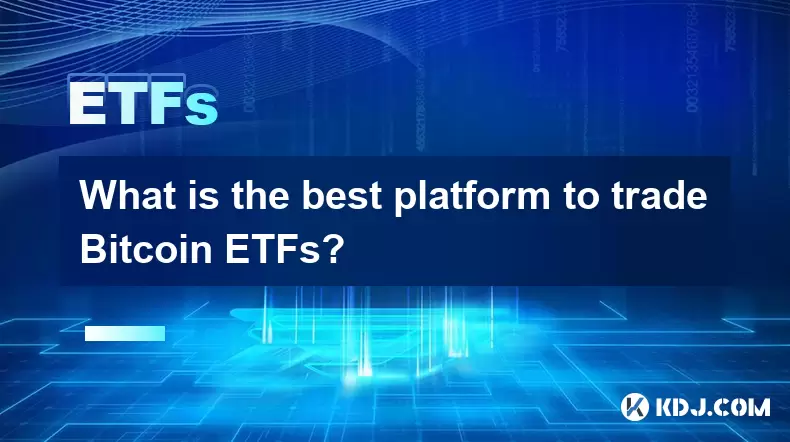
What is the best platform to trade Bitcoin ETFs?
Jul 23,2025 at 04:14am
Understanding Bitcoin ETFs and Their Role in TradingBitcoin Exchange-Traded Funds (ETFs) have gained significant traction among traditional and crypto...
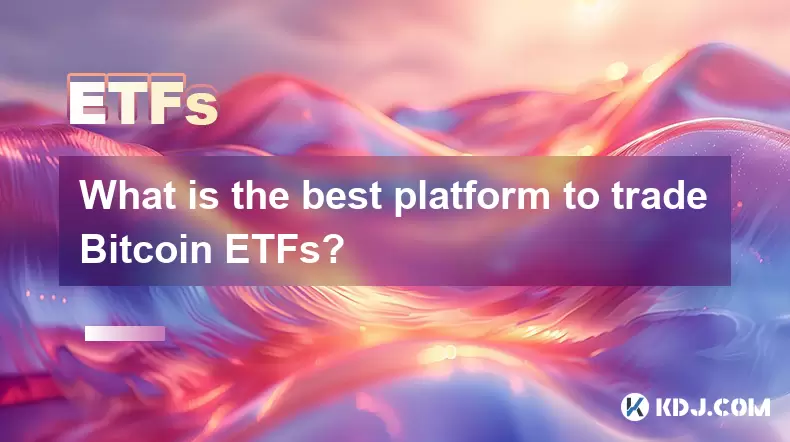
What is the best platform to trade Bitcoin ETFs?
Jul 17,2025 at 03:50pm
Understanding Bitcoin ETFs and Their Role in the MarketBitcoin Exchange-Traded Funds (ETFs) are investment vehicles that track the price of Bitcoin wi...

Will a Bitcoin ETF be available in my 401(k)?
Jul 17,2025 at 10:42pm
What is a Bitcoin ETF?A Bitcoin ETF (Exchange-Traded Fund) is an investment vehicle that tracks the price of Bitcoin without requiring investors to di...
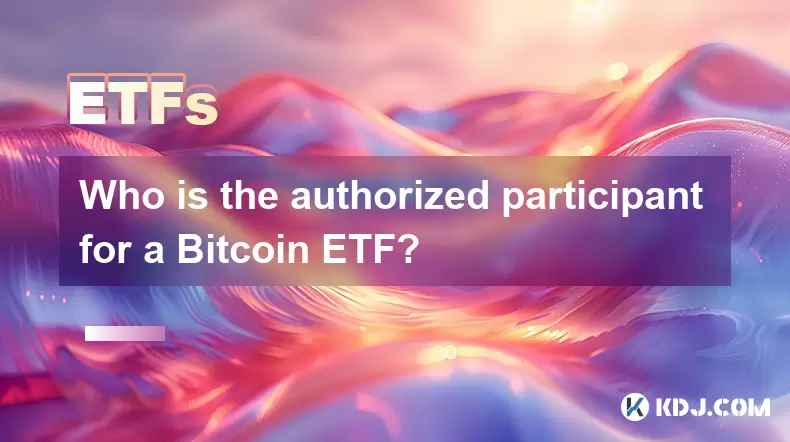
Who is the authorized participant for a Bitcoin ETF?
Jul 18,2025 at 12:42am
Understanding the Role of Authorized Participants in Bitcoin ETFsIn the context of Bitcoin Exchange-Traded Funds (ETFs), an authorized participant (AP...
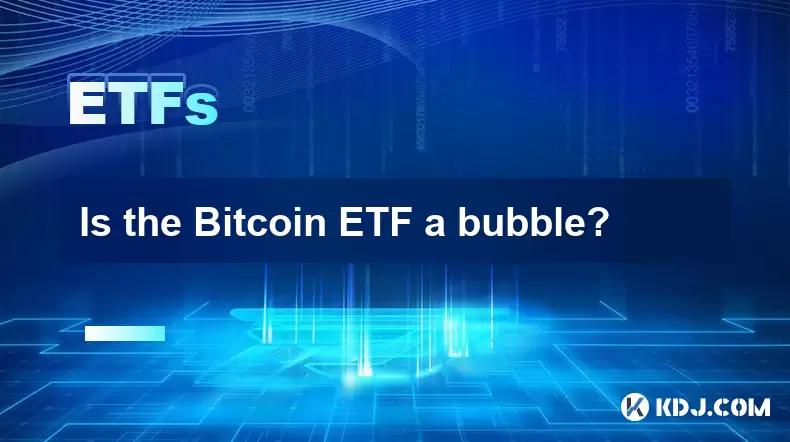
Is the Bitcoin ETF a bubble?
Jul 20,2025 at 06:57am
Understanding the Bitcoin ETF ConceptA Bitcoin Exchange-Traded Fund (ETF) is a financial product that aims to track the price of Bitcoin without requi...
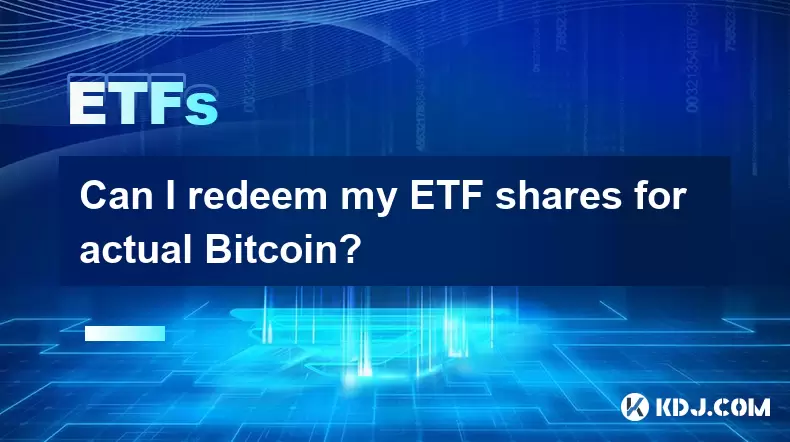
Can I redeem my ETF shares for actual Bitcoin?
Jul 17,2025 at 03:14pm
Understanding ETF Shares and Their Relation to BitcoinExchange-Traded Funds (ETFs) have become a popular investment vehicle for those looking to gain ...

What is the best platform to trade Bitcoin ETFs?
Jul 23,2025 at 04:14am
Understanding Bitcoin ETFs and Their Role in TradingBitcoin Exchange-Traded Funds (ETFs) have gained significant traction among traditional and crypto...

What is the best platform to trade Bitcoin ETFs?
Jul 17,2025 at 03:50pm
Understanding Bitcoin ETFs and Their Role in the MarketBitcoin Exchange-Traded Funds (ETFs) are investment vehicles that track the price of Bitcoin wi...

Will a Bitcoin ETF be available in my 401(k)?
Jul 17,2025 at 10:42pm
What is a Bitcoin ETF?A Bitcoin ETF (Exchange-Traded Fund) is an investment vehicle that tracks the price of Bitcoin without requiring investors to di...

Who is the authorized participant for a Bitcoin ETF?
Jul 18,2025 at 12:42am
Understanding the Role of Authorized Participants in Bitcoin ETFsIn the context of Bitcoin Exchange-Traded Funds (ETFs), an authorized participant (AP...

Is the Bitcoin ETF a bubble?
Jul 20,2025 at 06:57am
Understanding the Bitcoin ETF ConceptA Bitcoin Exchange-Traded Fund (ETF) is a financial product that aims to track the price of Bitcoin without requi...

Can I redeem my ETF shares for actual Bitcoin?
Jul 17,2025 at 03:14pm
Understanding ETF Shares and Their Relation to BitcoinExchange-Traded Funds (ETFs) have become a popular investment vehicle for those looking to gain ...
See all articles





















